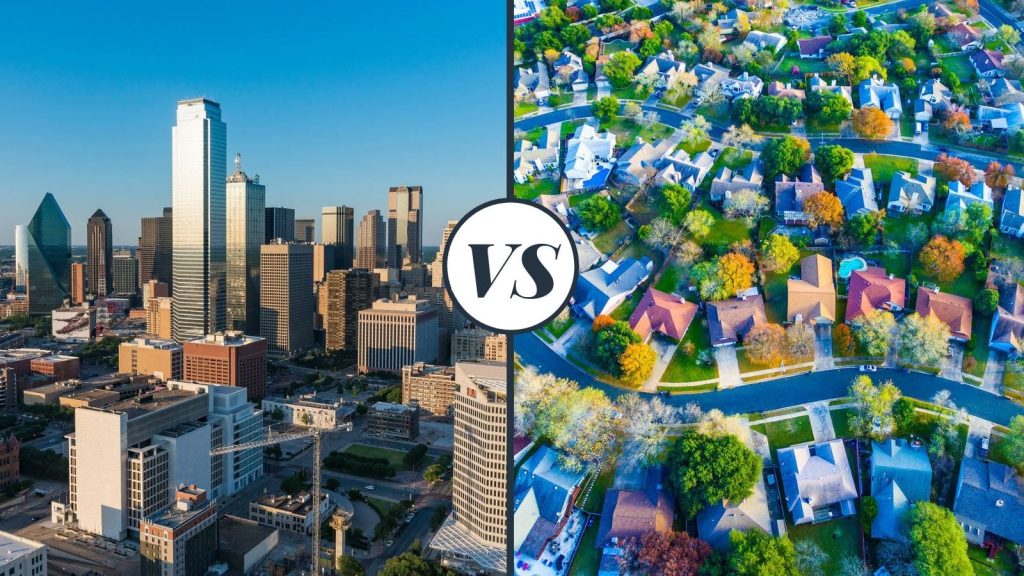The choice between the city and the suburbs is a pressing issue for many. This significant decision affects everyone’s lifestyle.
Environmental benefits
Suburbs offer unique environmental benefits that impact health and improve quality of life.
Closeness to nature
Suburbs immerse you in nature. They promise fresh air and silence. Residents enjoy greenery and silence every day. It improves physical and mental health. Walks in the fresh air strengthen the immune system. Fishing and mushroom hunting are joyful and calming.
Healthy sleep and well-being
The quiet of the suburbs improves sleep. Less noise and air pollution contribute to health. Clean air is good for breathing. The Rodnoy Dom residential complex from Darstroy in Novaya Adygeya will be a godsend for those who are not used to living within the city limits.
Gardening and farming
The suburbs offer land for gardens and allotments. Grow your own fruits and vegetables. It saves money and gives you fresh produce. Such activities also support physical activity and mental balance.
Active recreation in nature
The suburbs are ideal for sports and outdoor recreation. Parks, forests and water bodies are waiting for you. Ride a bike, run along the paths, go on picnics with your family. It has a beneficial effect on your health and mood.
Space and comfort
In the suburbs, spacious housing awaits you. Land and construction are cheaper, which means you can afford more square meters for the same money. Low-rise buildings are built quickly, and there are many offers. This makes suburbs, like those near Krasnodar, attractive and affordable.
Comfort and safety for the family
The suburbs are quiet. There is less noise and bustle of the city, which is ideal for family vacations. Nature is close by, children play safely. Displaced persons and military families find comfort and peace in the suburbs, which are reminiscent of their native lands.
Demand and prices are rising
Attention to the suburbs is growing, and so are prices. In Yelizavetka, for example, people are looking for housing further from the center, where there is more space and quiet. Such areas promise peace without losing the city’s amenities.
Transport and accessibility
Living in the suburbs? You’ll probably need a car. Public transportation isn’t as well developed here as it is in the city. This can be inconvenient, especially if you depend on it to get to work or school.
Quality of roads
The condition of the roads varies everywhere, but is often not the best. Good roads, of course, make life easier. However, in some places they may be in poor condition or even absent. In winter, the roads are not always cleared quickly. This complicates travel.
Choosing a car
Preference is given to cars with high cross-country ability. “UAZ” or “Niva” are well suited for the suburbs. They will overcome poor-quality roads. It is important to pay attention to the load capacity and trunk volume.
Transport infrastructure
The suburbs may have infrastructure problems, including the lack of centralized water supply and sewerage. This leads to additional costs for their maintenance.
Social infrastructure
The social infrastructure in the suburbs ensures a high quality of life. It includes educational institutions, medical centers and cultural facilities. These elements contribute to the development of the individual and take care of the health of residents:
Socioeconomic component. This category includes education, healthcare and cultural spaces. They form the basis for the intellectual and physical development of a person. Since the beginning of the 20th century, the development of these areas has been stimulated at the state level, which has led to an improvement in the technological base and the efficiency of institutions.
Household component. Household infrastructure creates comfortable living conditions. This includes the availability of essential goods, housing conditions and utilities. Such infrastructure makes everyday life easier, making it more convenient and less expensive.
The role of engineering infrastructure. Engineering infrastructure is the backbone for the functioning of residential and public buildings. It includes utilities, transport and communications. These services provide a comfortable and safe environment for the life and work of suburban residents.
Development Prospects: Public-private partnerships will play an important role in the future. They will allow combining resources to create better living conditions. The introduction of innovations and modernization of infrastructure will be the key to improving the quality of life in suburban areas.
the cost of living
Let’s look at the key aspects of the cost of living for the suburbs and the city center. It’s important to understand how these differences affect your wallet and lifestyle.
Property prices. Property in the suburbs is cheaper.
Utility costs. Maintenance of a house in the suburbs can often be more expensive than maintenance of an apartment in the city. In the city, there are additional payments for security and maintenance of the residential complex.
Transportation: Living in the suburbs, you may spend more on commuting to the city center. However, the savings on housing may offset these costs.
Services and amenities. In the city center, services are available at every turn. In the suburbs, you may need a car to get to the store or doctor.
Overall cost. In the end, living in the suburbs is often cheaper due to lower property prices and more living space. But don’t forget about transportation and utility costs.
Lifestyle and Leisure
Suburbs are attractive because they combine peace and closeness to nature with an active social life. Here’s why:
Outdoor activities. The suburbs are rich in parks and recreation areas. Here you can walk, play sports or garden. Fresh air and space encourage an active lifestyle.
Entertainment and culture. Don’t think that the suburbs are boring. Cinema, clubs, restaurants and festivals make leisure time rich. Socializing and entertainment will unite the community.
Sports and activities. The suburbs offer many opportunities for sports. From football to yoga, the choice is yours. It helps you stay fit and make new friends.
Communication with neighbors. In the suburbs, everyone knows each other. Neighbors communicate and help when needed. Such interaction creates comfort and support.
Nature and recreation. Do you like nature? In the suburbs you will find forests for walks and places for picnics. Walking in the forest or picking mushrooms brings joy and peace.
Development and education. There are schools with clubs and sections for children. This gives a chance to develop and find new hobbies in a safe environment.
Community and Security
Choose a suburb to live in and you will find not only comfort but also friends. In the suburbs, neighbors become like-minded people. Public holidays and events strengthen friendship. This creates a warm atmosphere and mutual assistance.
The suburbs are safe. Fewer people and close relationships reduce crime. Modern security systems, including video surveillance and security, protect every home. Families with children appreciate this security and peace of mind.
When choosing a place in the suburbs, pay attention not only to the picturesqueness and price. Every detail is important, from infrastructure to safety. This approach guarantees satisfaction from the choice of place of residence.
Disadvantages of Suburban Living
Transport and accessibility
Suburbs are often far from public transport stops. This creates difficulties with transfers and keeping to a work schedule. It is difficult without a car, and its maintenance increases expenses.
Infrastructure and amenities
Schools, shops, medical institutions can be located far from home. The quality and quantity of services are often inferior to those in the city. This makes life difficult for families with children who need educational and leisure activities.
Social isolation and leisure
Living away from the city can be isolating. There are few entertainment and cultural events, limiting social life. Leisure activities often have to be organized independently, which requires effort and expense.
Economic aspects
Maintaining a house in the suburbs is more expensive than living in a city apartment. Utility bills, land tax, and transportation costs increase expenses.
Who chooses life in the suburbs
Families with children. Families with children prefer the suburbs for their quiet, safety and proximity to nature. Houses with gardens provide children with a place to play outdoors. Schools and kindergartens are usually nearby.
Seniors. Seniors look for peace and convenience in the suburbs. Less noise, proximity to medical facilities and green areas make it more convenient for the older generation.
Nature lovers. Nature lovers choose the suburbs for the opportunity to be closer to forests, parks and lakes. It is a place for walking, cycling and picnics.
Those who seek solitude. Those who seek solitude find it in the suburbs. Fewer people and noise allow you to enjoy the silence of home.
Remote workers. Remote workers value the suburbs for the opportunity to avoid the daily commute to the office. This reduces stress and improves quality of life.
Entrepreneurs and Freelancers: Entrepreneurs and freelancers can set up a comfortable home office in the suburbs. The absence of distractions increases productivity.
Real estate investors. Investors see investment potential in the suburbs. Real estate here can be a profitable investment.



